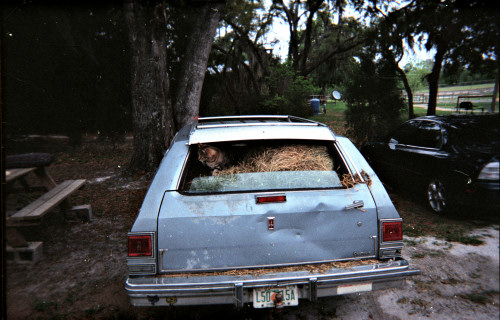A 365-Day Project
"We Are All Mozart"
A project to create
new works and change
the perception of the
music of our time.


 January 28, 2008
January 28, 2008 
"These guys with 10 times my training and two music degrees up on me to boot should, you know... investigate key relationships once in a while. Whenever I hear a new tonal work, either it jumps keys with no rhyme/reason, or it keeps chugging along in the same key. I have this fault in my own music, so I'm jealous of the folks whose training means they should have this ability in their bones, but, for some reason, can't be bothered."
So wrote Robert Bonotto the other day, and it got me to thinking. What would the contemporary reaction have been in earlier times? Would it have been similar? There was, after all, a plethora of very bad music out there -- not just the endless Vivaldi concerto della mascherina, but also those rarely-now-played composers championed in the Nineteen Seventies by the likes of Musical Heritage Society, workaday composers who assembled compositions as if building from Legos (whose fiftieth anniversary is celebrated today), the acoustic results of which were little more interesting than your average garage band is now.
I've been listening to television commercials again. The reworking of old pop tunes can reveal how vapid some of them were without their orchestrations, or how clips of old ones redone (Chan Marshall's take on Cat Stevens for DeBeers and Kathy Fisher's rework of Sarah McLachlan for CVS Pharmacy) can bring new depth to them in just a few seconds. The unique character of individual pieces is bound up not only with their (I can guess that tune in three) notes, but also their orchestrations. Notes: Misty, Over the Rainbow, Eine Kleine Nachmusik, Beethoven's Fifth Symphony. Some are notes in orchestrational context: Rite of Spring's bassoon solo, Purple Haze opening, Paint It, Black, Herrmann's Psycho. Some exist differently in different guises, such as Woodstock or any brilliant jazz improvisation on an extant song. Some are so distinctive that a single event is enough: the first chord of Symphony of Psalms, any second of For Ann, Rising, the repeated note pair that opens "Siegfried's Funeral March" from Götterdämmerung.
Musical compositions need not speak all languages imaginatively at one time, and can be missing elements or have unremarkable ones and not lose their remarkable character -- Beethoven's legendary inability to write a melody and the lack of a leading melody in hiphop, the harmonic stasis and absent development of minimalism, the missing melodic subtlety of our dominant system of twelve-tone equal temperament, the mechanistic rhythms of a century's worth of the Baroque where a rhythmic ambiguity is rare enough to merit its own musicological term. Or the blues.
So let's assume that whenever Robert hears ten new tonal works, he's hearing nine where the "no rhyme/reason" is exactly that. But what of that tenth? Is there no reason for its key jumping or chugging? Maybe the influence of the non-functional harmony of minimalism actually has been pervasive. Perhaps harmony is deceptive because it has become, well, postmodern, full of irony, choosing from a vast menu of historical choice, and often little more than a series of simultaneities underpinning textural or rhythmic interests. Consider the passing tone. At what point does it stop passing and become melodically or harmonically significant? At what point does one passing tone become two? What tones are left important? Certain? There's that Chopin A minor Prelude, Op. 28 No. 2 ... harmony making sense underneath, but so many tones are shifting in and out of position that it loses stability. Something is interesting here, but it fails to cleave together. Or maybe that's the point.
The listener contemporaneous with the composer is in a difficult position. Trusting every composer's competence and imagination flattens out the discriminatory skills. Like listening to endless television commercials, it narrows the acoustic panorama and squeezes expectations out of the experience, as well as dulling that experience with each iteration of the shared musical language. Vivaldi on the rampage. So trust engenders mistrust, and the unexpected key jumps or static progressions are taken as an exhausting pattern of compositional sameness rather than for their possibilities (perceptive or subversive) within the context of the composition or the composer's work.
To quote Bubble, "Who can say?"
* * *
We have wonderful meals here at home. Most of the times it's invented from what happens to be in the house. Very rarely it's from a recipe (like last week's chocolate torte or last month's low-fat key lime pie).
Last night it was faux-Eastern Chinese/Indian mélange: shrimp (on sale!), cooked, peeled, cooled and dried for an hour, slightly re-warmed and dried more to drive the water out without shrinking them, and then rolled in paprika, blackening powder, cayenne and vindaloo spices, and set aside. Basmati rice -- bulk at our local food co-op -- was put on with some aminos, and brought to separate-grain perfection in twenty minutes. By then a small bucket of kale was chopped and steamed. The wide pan was heated with infused basil oil until just smoking, the shrimp tossed in quickly and seared with garlic, and the kale added immediately, so the oily steam could catch fire. Then in went a small handful of slivered almonds, the rice scooped onto the oven-heated plates, and the shrimp mix placed on the bed of rice.
Tonight it was a faux-Mexican: frozen beef and pork (our stepdaughter raised pigs this year) sliced thin, and seared with onions and garlic and Worcestershire, hot Sesame oil, jalapeño, and hot Thai saté. Black and white beans were drained and rinsed, cooked while shaking and tossing in a skillet with infused basil oil, and mixed quickly with sofrito. Whole-kernel corn and roasted red peppers were stirred together and heated (yes, that in a microwave). Dutch oude kaas was grated with Vermont sharp cheddar. Mushrooms were cooked down. Mrs. Renfro's salsa and sour cream were placed on the side. And more Basmati rice had been made ready. Tortillas were seared in the remaining oil from the meat, and all served in separate bowls, built into a dinner by each of us at the table on plates pre-heated in the oven.
One of these days I should start taking pictures of this food. I have a few here & there, but need to get better about suspending hunger for the few seconds it would take to shap a shot. It's time for that composers' cookbook. There are a half-dozen composers ready to jump in, as I mentioned the other day. Food. Can hardly bear talking about it. I need to go to the kitchen now...
* * *

Still Life in Hay and Cat: The proper use of a station wagon. I was scanning old negatives whose prints were lost. This photo was taken by my stepdaughter Lila during her equestrian training in Florida in 1998.